Motorsports
Ogier responds to Tanak pace to extend advantage
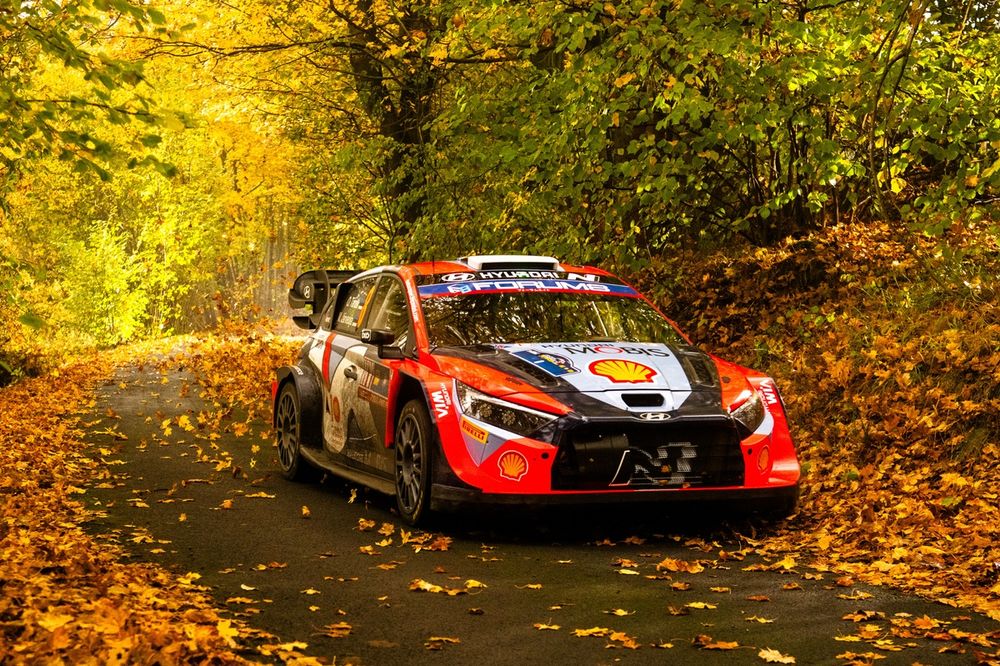
Toyota’s Sebastien Ogier will take a slender lead over Hyundai’s Ott Tanak as 14s separated the top three heading into the final four stages of the Central European Rally.
The eight-time world champion won two of the three afternoon asphalt stages to extend his advantage over Tanak to 5.2s, with Toyota’s Elfyn Evans in third and 14s back.
Ogier’s performance earned the Frenchman 18 provisional championship points to boost Toyota’s manufacturers’ title hopes, while Tanak picked up 15 points and Evans claimed 13.
Championship leader Thierry Neuville ended the day in fourth, 39.8s back on the overall lead, to claim 10 provisional championship points, after two errors in the morning’s stage 11 cost him half a minute and the rally lead.
It proved to be a setback for the Belgian, who can seal a maiden world title if he can outscore Tanak by two points.
Toyota’s Takamoto Katsuta, team-mate Sami Pajari and M-Sport’s Gregoire Munster rounded out the top seven. M-Sport’s Adrien Fourmaux retired from the day’s action after damaging the rear of his Ford Puma in stage 10.
Neuville’s demise in the morning put attention firmly on the fight for the rally lead between Ogier, Tanak and Evans as the trio had been separated by 8.1s.
Ott Tänak, Martin Järveoja, Hyundai World Rally Team Hyundai i20 N Rally1
Photo by: Red Bull Content Pool
The afternoon’s first stage, a second pass through Granit und Wald (20.05km), went the way of Tanak as the Hyundai driver repeated the stage win from the morning pass.
The stage was mostly dry, unlike the morning, but there were still a few “sketchy” damp patches according to Tanak. The 2019 world champion’s effort was 3.4s faster than rally leader Ogier’s, which reduced the Toyota driver’s lead to a mere 1.1s.
Evans also pushed hard on the dirty road, matching Ogier’s time to remain poised in third overall.
Resigned to the fact that the gap to lead group was too large to claw back, Neuville delivered a steady run to clock the fourth-fastest time ahead of Katsuta, Pajari, Mikkelsen and Munster.
Katsuta did have 16 seconds added to his overall time after he was found to have exceeded the speed limit by 8km/h through the virtual chicane in the morning pass through the test.
Ogier responded to Tanak’s push in stage 13 (Beyond Borders, 24.33km) by winning the test and crucially taking three seconds out of his Hyundai rival. The road was much drier compared to the morning pass.
“We had to react, Ott was fast in the previous, we had to be fast on this. It is a drier road, so we have to be better on it,” said Ogier.
Thierry Neuville, Martijn Wydaeghe, Hyundai World Rally Team Hyundai i20 N Rally1
Photo by: Fabien Dufour / Hyundai Motorsport
Neuville was Ogier’s nearest rival on the stage, 0.9s adrift, as the WRC points leader focused on bringing the car home, as both Tanak and Evans dropped time to Ogier.
“In the dry conditions, a lot of markings have improved, I had a bit of hesitation in there. I should learn to ignore what my old man [father, Gwyndaf Evans] says sometimes!” Evans said. “He’s doing my gravel notes, you have to take everything with a pinch of salt but it’s not always that easy to do.”
Ogier managed to pull further clear of Tanak on the final stage of the day after eclipsing the Hyundai driver’s time by 1.1s, with Evans two seconds adrift of the pace to set up an intriguing three-way fight for the victory on Sunday.
In WRC2, Nikolay Gryazin opened up a 1m50.8s lead over Filip Mares, while Yohan Rossel’s championship hopes are all but over after a mistake in the morning left him 11th in class and 15m40.7s in arrears.
The rally will conclude after four Sunday stages comprising of 54.04km.
Motorsports
FIA introduces salary offset for Audi in 2026 F1 cost cap
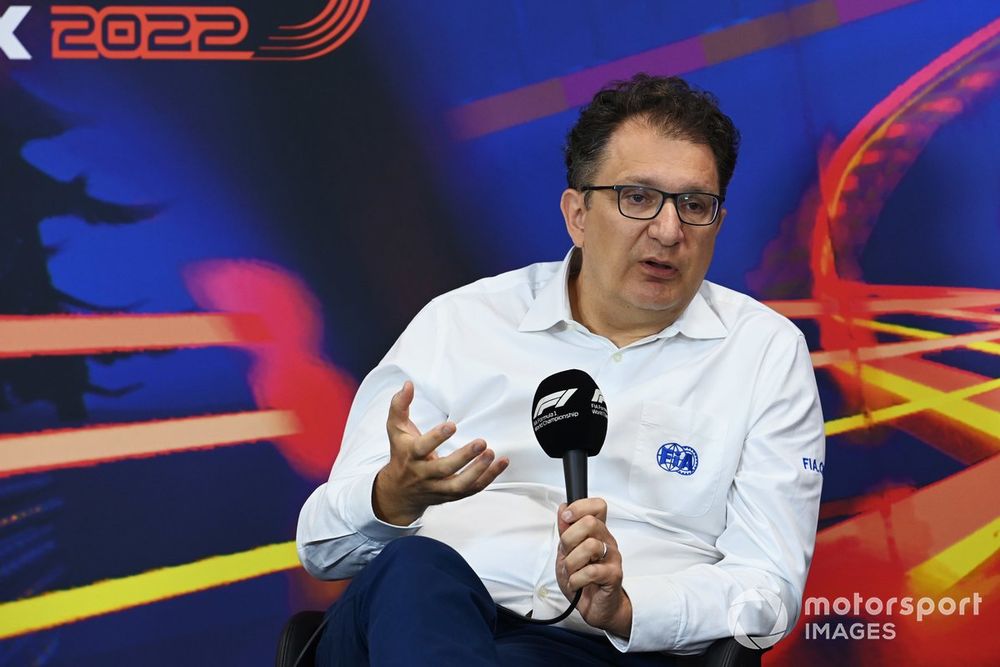
The FIA has introduced a cost cap offset in Formula 1’s 2026 financial regulations, due to the Sauber team’s higher salaries in Switzerland.
Sauber, to become the works Audi team in 2026, has long argued its staff costs are a big disadvantage as it fights to become competitive due to the much higher wages and cost of living in Switzerland compared to its rival teams in the UK and Italy.
It therefore pushed for the new regulations to include an offset for teams operating in countries with higher salary levels than the UK or Italy.
According to figures from the Organisation for Economic Co-Operation and Development (OECD), the average wage in Switzerland in 2022 was $80,000 compared to $54,000 in the UK, where most other teams are based. That means, since the introduction of the cost cap, the Hinwil-based team has dealt with significantly less headroom to spend resources on performance and car development.
The FIA has now agreed that Sauber’s situation is not fair and will work on a cost cap offset from 2026 based on OECD salary data, which has been incorporated in the latest version of the financial regulations.
Speaking to Nikolas Tombazis, single-seater director for the FIA, he confirmed that Sauber’s situation led to a regulatory rethink for 2026.
“It is our responsibility to be fair,” Tombazis said at Austin’s US Grand Prix. “It became obvious to us that salaries in certain countries are much, much higher and cost of life is much higher in certain countries.
Nikolas Tombazis, Head of Single Seater Technical Matters, FIA
Photo by: Mark Sutton
“I see it myself, I live in Geneva. Whenever I go to the supermarket I think about it. And we felt that a team based in a high labour cost country like Switzerland would end up having approximately 30% or even 40% fewer people working on the car, which we felt was fundamentally unfair.
“We’ve decided that this could either lead to us trying to take some protections from a regulatory point, or it would eventually mean that teams could not operate, and a team like Sauber would have to basically close and move to another country, which we don’t think is the right way for the world championship to operate.
“So, that’s why there’s an adjustment in the financial regulations for 2026 which will basically adjust the salaries that get considered in the cost cap by some factors that get determined by OECD data, data that’s available to the world. As we get data from teams, we know that this OECD data is very consistent with the salary differences that exist within Formula 1 context and amongst the engineers of teams. So it’s not just OECD data.”
For 2026, the F1 cost cap has been raised from $135m to $215m after including a whole raft of new items under the financial regulations.
Rather than a large net increase in the amount F1 teams will be spending, the new figure will now include several items that were previously exempted. The higher figure also takes into account inflation adjustments, as well as changes to the $USD exchange rate.
The additional $300,000 allowance for each sprint race is an item now included in the base figure, while the $1.8m allowance for any race over the ceiling of 21 has been raised to 24 Grand Prix per season.
Finally, teams can also no longer write off certain R&D costs made under the UK research and development expenditure credit scheme.
Motorsports
Red Bull bib adjuster case is now closed, FIA says

The FIA says the matter surrounding Red Bull’s front bib adjuster is now closed in its opinion, as it rules out a wider investigation.
Motor racing’s governing body has acted for this weekend’s United States Grand Prix in adding seals to the Red Bull car to ensure that an adjustment device in the RB20 cockpit that can raise or lower the front bib cannot be used outside the regulations.
That came following suspicions from rival teams that Red Bull could have been altering its ride height under parc ferme conditions – which would be illegal.
However, having conducted a thorough examination of the Red Bull system over the Austin weekend, the FIA says it is satisfied that the measures it has in place mean there can be no rule breach.
And while the governing body admits that it is impossible to be sure that Red Bull never used the device illegally in the past, it does not think it practical to dig any deeper into the matter.
The FIA’s head of single-seater matters Nikolas Tombazis said: “I mean, honestly, can I say with complete certainty about whether there’s ever been anything irregular? No. Can I say that the matter is closed? Yes, absolutely.”
Nikolas Tombazis, Head of Single Seater Technical Matters, FIA
Photo by: Mark Sutton

While McLaren has called on the FIA to investigate further whether Red Bull did use the device in the past, Tombazis said that there was no realistic way to find answers as to what happened historically. And the federation sees no reason to launch any further action simply based on suspicion from competitors.
“To go and retroactively actually prove exactly what has happened before is difficult, and we don’t think we have the ability to go and investigate two years’ worth of situation,” he said.
“Generally, when we decide to escalate the matter, and to go to the stewards or tribunal or whatever, we want to have some reasonable indication – so not based on hearsay or just speculation.
“As the design is not illegal, we believe that the correct action is to say: ‘Well, okay, certain things need to happen in order to guarantee there’s no ongoing sort of concern.’ But we also have to also draw a line in time and say that there are certain things we can’t go into much more detail [with].”
Tombazis said it was not realistic to think that analysis of garage CCTV images that the FIA captures from each weekend would yield any evidence of the team altering the device.
“People are allowed to check things on the car, and it’s a matter of how easy that is,” he said.
“If you have to dismount the whole bodywork and do 50 things, then obviously it would be visible in the camera. But on something as simple and as quick as that, I don’t think you can realistically check that on cameras or virtual images or so on.”
Christian Horner, Team Principal, Red Bull Racing, Helmut Marko, Consultant, Red Bull Racing, talk in the garage as mechanics work on the car of Max Verstappen, Red Bull Racing RB20
Photo by: Mark Sutton / Motorsport Images

While some senior paddock figures have suggested that the FIA should formally speak to Red Bull staff, or seek potential whistleblowers, to be totally sure it was never used in the past, Tombazis does not see that as a route worth pursuing.
“We need to always consider that we’re dealing with humans,” he said. “We’re dealing with humans changing conditions: with loyalties – old loyalties, and new loyalties. So, one has to be a bit careful about how you escalate that.
“We also don’t want to be fitting lie detectors on people and doing interrogations under bright lights, or something like that. That is not what we want to do here.
“I’ve obviously worked in the past in teams, quite a lot, and I’ve employed people from other teams. I think there’s sometimes a tendency to say, well, where I came from, we were doing XYZ.
“And sometimes one has to really interpret these comments very, very carefully. You cannot just base an escalation on a few comments like that.”
Motorsports
DTM – Round 8: Hockenheim Race 1 – Highlights
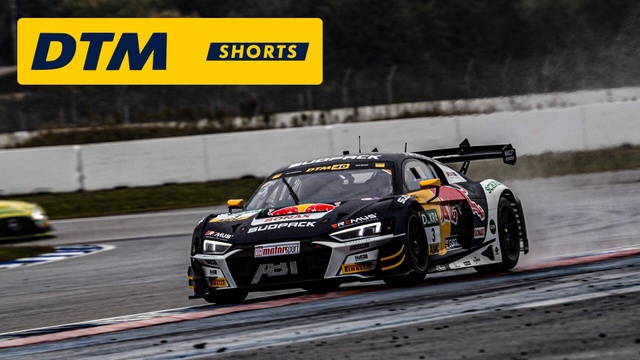
Continue reading with advertising …
… or with a subscription
Visit motorsport.com as usual with advertising and tracking. You can revoke your consent at any time via the data protection page.1
Use motorsport.com without any advertising banners, personalized tracking and commercials for a small fee.
More information about advertising and tracking in our Data protection notice, the List of our partners and in Data protection information center.
Already a subscriber?
Log in here
Motorsports
Ferrari Challenge | Trofeo Pirelli + Pirelli AM: Altoe and Viol on top in Qualifying
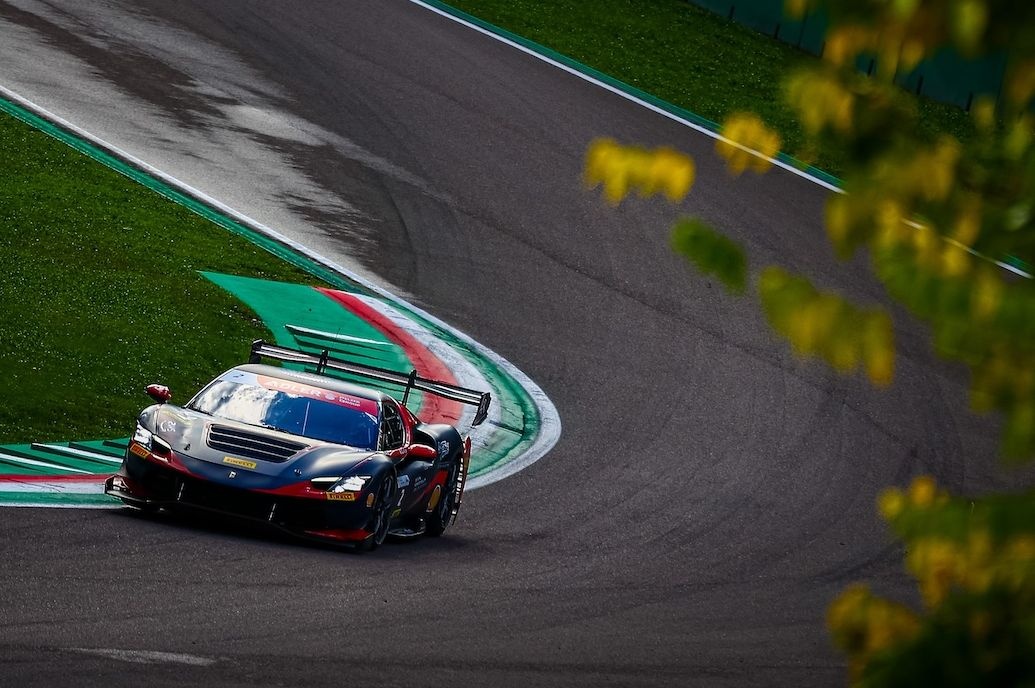

Giacomo Altoe grabbed the best time in the Trofeo Pirelli Qualifying – Trofeo Pirelli AM right at the very end of the session, stopping the clock at 1m52.009s.
The Emil Frey Racing team driver outwitted Luca Ludwig (Mertel Motorsport) by just 95 thousandths of a second, on his final run. The two Italians put on quite a show in Qualifying, exchanging first place several times and leaving quite a gap behind them.
Next up, Dylan Medler – the first driver from the Ferrari Challenge North America – was the best of the rest, but he was more than a second away from the benchmark.
Bence Valint, Luigi Coluccio and Philipp Baron completed the top-6 ranking of those who qualified for this afternoon’s Superpole in the Trofeo Pirelli category, while Hendrik Viol was quickest in Trofeo Pirelli AM.
The Scuderia Praha driver stopped the clock at 1m53.512s, preceding Marco Zanasi by 7 tenths and Claus Zibrandtsen by a clear second. Danilo Del Favero, Andrew Morrow and Axel Sartingen completed the Top 6 in the category.
With thirteen minutes remaining before the end of Qualifying, Akhobadze remained stationary on the track, forcing Race Direction to display the red flag to allow the track marshals to move the vehicle.
Motorsports
Double Interview with Nicklas Nielsen and Antonio Fuoco
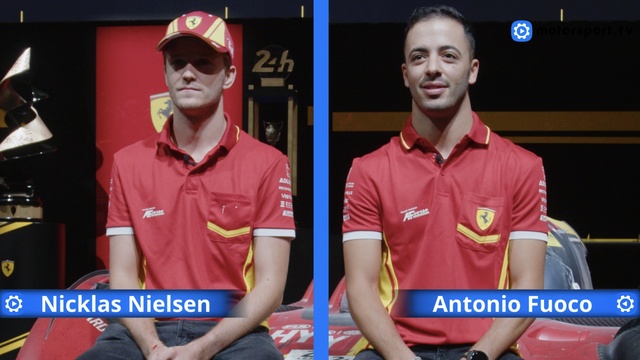
Continue reading with advertising …
… or with a subscription
Visit motorsport.com as usual with advertising and tracking. You can revoke your consent at any time via the data protection page.1
Use motorsport.com without any advertising banners, personalized tracking and commercials for a small fee.
More information about advertising and tracking in our Data protection notice, the List of our partners and in Data protection information center.
Already a subscriber?
Log in here
Motorsports
The US Grand Prix’s rocky past and fascinating future at COTA
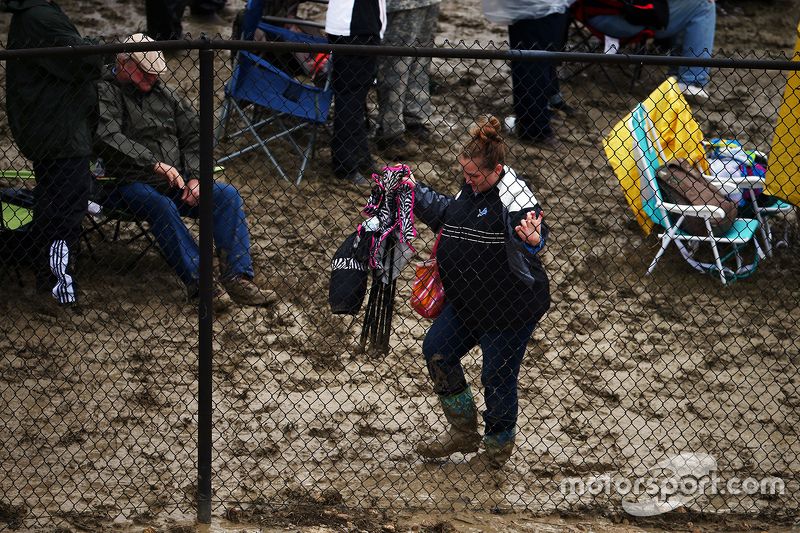
It’s been nearly 10 years since the 2015 Formula 1 United States Grand Prix. But if I close my eyes, I can still see it.
It was Saturday — qualifying day — and my 20th birthday. I was a college student in the garage at Circuit of The Americas, with a media credential and a few professors angry I’d skipped their classes to work in the field I was studying to join. I wore rain boots up to my knees and clutched an umbrella so close to my head that I could barely see in front of me. When I did look up, I saw a smattering of fans in the stands, all peering through ponchos. The F1 cars splashed by so violently that it felt more like I was watching a water-park ride than a racetrack.
Fans in the mud
Photo by: XPB Images

Spectators waded through mud, rain, and flooding for a dreary weekend of racing, followed by an even drearier set of headlines:
“The end of F1 in Austin? U.S. Grand Prix might not be back next year“
“Why the future of Formula One in Austin looks a little murky“
“Questions about future of Formula One’s U.S. Grand Prix as Texas cuts funds“
“U.S. Grand Prix ‘subject to agreement’ on 2016 Formula 1 calendar“
“Bernie Ecclestone casts more doubt on 2016 USGP“
That rainy day, and those headlines, feel like a lifetime ago. Yet it’s merely a blip in America’s long and rocky history with F1 riddled with safety concerns, crumbling track surfaces, entire races falling to pieces right in front of spectators’ eyes, and more. These catastrophic events happened at tracks all over the country, and they led F1 to leave the US market again, and again, and again. That rainy day in 2015 was a pivotal moment for F1 in America, and I thought it would end like all the rest: with F1 leaving us behind to try again later.
But somehow, F1 in America didn’t just survive that 2015 flood — it crawled from obscurity into the limelight, all with Circuit of The Americas at the center of it. Heading into this 2024 race weekend, F1 at COTA isn’t the same event I worried we’d lose all those years ago.
F1 at Circuit of The Americas: The Early Years
Circuit of The Americas sits just outside of Austin, Texas. Famous F1 track designer Hermann Tilke created the track, and it opened to the public in October 2012, when F1 champion Mario Andretti ripped the first few laps. The inaugural F1 race happened a month later and broke a five-year absence from the American market, all spurred by the series’ infamous tire disaster at Indianapolis Motor Speedway.

Sebastian Vettel, Red Bull Racing
Photo by: XPB Images
When COTA opened in 2012, it was America’s big, shiny, purpose-built F1 track, with new facilities, a giant watchtower looking over the course, and vast star-spangled runoff areas to meet modern F1 safety standards. It’s a 20-turn, 3.41-mile circuit with a mix of high-speed straightaways, harsh braking zones, and momentum-based turns like the esses and carousel, and it’s my personal favorite track to drive.
For the most part, COTA is still America’s premiere F1 facility. The series’ new US tracks in Miami and Las Vegas are street circuits, and while they are glamorous, they don’t have that same permanent footprint. (The biggest mistake the builders made at COTA was not planting trees, because it’s been 12 years and there’s still not a square inch of natural shade.)
But there were hesitations about COTA from the start. When the circuit opened, the local Austin Chronicle wrote about resident hesitation, funding and subsidization concerns, and F1’s rocky history in America—all things that would soon plague the race and venue.
Pestilence, Destruction, and (Avoidance of) Death
The first US Grand Prix at COTA in 2012 had a three-day attendance of 265,000 and a race-day attendance of 117,429, but the numbers fell from there.
The 2013 race had 250,000 weekend spectators, 2014 had 237,000, and the rainy 2015 race had 224,000. My mom went to the track and co-headlining Elton John concert in 2015, and she called the race “dismal and muddy.” When she got surprise tickets to the ultra-expensive indoor Paddock Club with me, she said that she felt like “Cinderella in her dirty cleaning clothes.”
The COTA attendance numbers didn’t get drastically worse from year to year, but they did get worse, adding up to a weekend drop of about 41,000 in four years. Austin residents also tend to get invested in their local events — University of Texas football games, the Austin City Limits music festival, and the like. But my Italian professor made me ask permission (in Italian) to skip class for a ride-along with F1 legend Sebastian Vettel, and my audio-journalism professor acted like me working the race was an inconvenience. This lack of enthusiasm came because they — and others — didn’t consider F1 to be a true Austin event yet. True Austin events are always worth attending.
The opportunity for it to become a true Austin event nearly escaped, quite prematurely. Just after the 2015 race, storms bashed COTA. Rains flooded the (very tall) traffic tunnels leading into the infield, and the storm knocked over trams, flattened temporary buildings, and ripped seats out of the main grandstands. A rock wall got hit so hard it fell apart, and an awning got ripped off of a nearby gas station.
While the storm raged, so did discussions about whether the state would or should keep funding the race. When F1 released its 2016 calendar, the US Grand Prix had an asterisk by its listing: *subject to agreement with the promoter and the National Sporting Authorities. The U.S. Grand Prix was, once again, in doubt.
The USGP needed a boost, so in 2016, the event organizers brought in the big act: Taylor Swift. It was advertised as her first and only concert of the year, and it brought in an estimated 80,000 attendees.
Taylor Swift in concert
Photo by: Jerry Andre / Motorsport Images

All of this made sense in 2016, when F1 in the U.S. needed an attendance boost and beacon of hope. But in 2024, it’s unthinkable. It’s hard to imagine Swift, whose extensive Eras Tour averaged 72,000 attendees per show according to reports in 2023, being an add-on to a sporting event instead of her own show, and it’s hard to imagine that F1 would even need her help in America.
I remember sitting in the media center in 2016, looking at live traffic maps to see when to leave the track. (This is necessary at COTA, since a couple of two-lane roads lead into a venue with a six-figure capacity.) The map leading into COTA after the on-track activities ceased was solid red, because the concert-goers opted for music only. Forget the race cars.
Things were bad. When the COVID-19 pandemic hit and canceled the 2020 USGP, it could’ve been worse.
But then, the “Drive to Survive” effect happened.
Staying Unique in a Saturated U.S. Market
Netflix’s F1 docuseries, “Drive to Survive,” exploded in popularity as Americans sat at home during pandemic lockdowns. So did F1.

Charles Leclerc, Ferrari, and Pierre Gasly, AlphaTauri, in the drivers parade, flanked by the Dallas Cowboys Cheerleaders
Photo by: Andy Hone / Motorsport Images
The return to COTA for the 2021 US Grand Prix saw a weekend attendance of 400,000, setting a new record for F1 while the series scrambled to capitalize on its American boom. The Miami Grand Prix joined the calendar for 2022, and the Las Vegas Grand Prix — a race down Vegas’ famous Strip, with casinos on either side of the track — debuted in 2023. America became an F1 hotbed, hosting three of the series’ 24 global races this year.
Now, after deep lows and record highs, COTA faces a new challenge: defining itself in an era where it’s the US Grand Prix in name only, since there are now three US Grands Prix. When F1 returned to the US after its pandemic cancellation and “Drive to Survive” boom, COTA was the main option for new American F1 fans. It was like the one diner in a small town: It didn’t have to stand out, because everyone had to go there anyway.
But now, that town has a Cheesecake Factory and a Chili’s. There’s competition, with freshly polished dining tables and multi-page menus with coil bindings. The local diner is still a staple, but there are tempting distractions.
The way forward for the US Grand Prix at COTA, I think, is to lean into Texas culture. Miami is the club and beach hotspot, Vegas is the glitzy night race, and Austin should be the Wild West race. The appeal of F1 races around America shouldn’t just be their geographic proximity to spectators, but also what kind of culture they offer. In Austin, that culture is modern cowboys and live music.
Sir Jackie Stewart meets a Texas Longhorn
Photo by: Mark Sutton / Motorsport Images

It might feel like an elaborate cosplay for locals, but all of this is cosplay in some form. The Miami race is a giant parking lot, and Vegas is a city of overpriced knockoffs, yet both feel glamorous because that’s what they’re advertised to be. These events are what we—and the race promoters—make of them.
I’ve experienced every era of F1 in Austin, from the torrential floods of 2015 to the bright, sunny days post-”Drive to Survive.” Each of them feels like a lifetime ago, and hopefully, F1 in the US has many lifetimes to go.
-

 Science & Environment1 month ago
Science & Environment1 month agoHyperelastic gel is one of the stretchiest materials known to science
-

 Technology3 weeks ago
Technology3 weeks agoIs sharing your smartphone PIN part of a healthy relationship?
-

 Science & Environment1 month ago
Science & Environment1 month ago‘Running of the bulls’ festival crowds move like charged particles
-

 Science & Environment1 month ago
Science & Environment1 month agoHow to unsnarl a tangle of threads, according to physics
-

 Science & Environment1 month ago
Science & Environment1 month agoMaxwell’s demon charges quantum batteries inside of a quantum computer
-

 Technology1 month ago
Technology1 month agoWould-be reality TV contestants ‘not looking real’
-

 Science & Environment1 month ago
Science & Environment1 month agoLiquid crystals could improve quantum communication devices
-

 Science & Environment3 weeks ago
Science & Environment3 weeks agoX-rays reveal half-billion-year-old insect ancestor
-

 Science & Environment1 month ago
Science & Environment1 month agoQuantum ‘supersolid’ matter stirred using magnets
-

 Womens Workouts4 weeks ago
Womens Workouts4 weeks ago3 Day Full Body Women’s Dumbbell Only Workout
-

 Science & Environment1 month ago
Science & Environment1 month agoSunlight-trapping device can generate temperatures over 1000°C
-

 Science & Environment1 month ago
Science & Environment1 month agoWhy this is a golden age for life to thrive across the universe
-

 Science & Environment1 month ago
Science & Environment1 month agoQuantum forces used to automatically assemble tiny device
-

 Science & Environment1 month ago
Science & Environment1 month agoHow to wrap your mind around the real multiverse
-

 Science & Environment1 month ago
Science & Environment1 month agoNerve fibres in the brain could generate quantum entanglement
-

 Science & Environment1 month ago
Science & Environment1 month agoA slight curve helps rocks make the biggest splash
-

 Science & Environment1 month ago
Science & Environment1 month agoLaser helps turn an electron into a coil of mass and charge
-

 Science & Environment1 month ago
Science & Environment1 month agoITER: Is the world’s biggest fusion experiment dead after new delay to 2035?
-
News1 month ago
the pick of new debut fiction
-

 News1 month ago
News1 month ago▶️ Hamas in the West Bank: Rising Support and Deadly Attacks You Might Not Know About
-

 Science & Environment1 month ago
Science & Environment1 month agoTime travel sci-fi novel is a rip-roaringly good thought experiment
-

 Science & Environment1 month ago
Science & Environment1 month agoA new kind of experiment at the Large Hadron Collider could unravel quantum reality
-

 News4 weeks ago
News4 weeks agoOur millionaire neighbour blocks us from using public footpath & screams at us in street.. it’s like living in a WARZONE – WordupNews
-

 News1 month ago
News1 month ago▶️ Media Bias: How They Spin Attack on Hezbollah and Ignore the Reality
-

 Science & Environment1 month ago
Science & Environment1 month agoNuclear fusion experiment overcomes two key operating hurdles
-

 Technology3 weeks ago
Technology3 weeks agoWhy Machines Learn: A clever primer makes sense of what makes AI possible
-

 Technology3 weeks ago
Technology3 weeks agoUkraine is using AI to manage the removal of Russian landmines
-

 Technology2 weeks ago
Technology2 weeks agoThis AI video generator can melt, crush, blow up, or turn anything into cake
-

 Science & Environment1 month ago
Science & Environment1 month agoPhysicists are grappling with their own reproducibility crisis
-

 Science & Environment1 month ago
Science & Environment1 month agoPhysicists have worked out how to melt any material
-

 Technology3 weeks ago
Technology3 weeks agoMicrophone made of atom-thick graphene could be used in smartphones
-

 Sport2 weeks ago
Sport2 weeks agoWales fall to second loss of WXV against Italy
-

 MMA2 weeks ago
MMA2 weeks agoJulianna Peña trashes Raquel Pennington’s behavior as champ
-
Business2 weeks ago
DoJ accuses Donald Trump of ‘private criminal effort’ to overturn 2020 election
-

 TV2 weeks ago
TV2 weeks agoসারাদেশে দিনব্যাপী বৃষ্টির পূর্বাভাস; সমুদ্রবন্দরে ৩ নম্বর সংকেত | Weather Today | Jamuna TV
-

 Business2 weeks ago
Business2 weeks agoWhen to tip and when not to tip
-

 Sport2 weeks ago
Sport2 weeks agoCoco Gauff stages superb comeback to reach China Open final
-
Business3 weeks ago
Eurosceptic Andrej Babiš eyes return to power in Czech Republic
-

 News1 month ago
News1 month agoYou’re a Hypocrite, And So Am I
-

 Sport3 weeks ago
Sport3 weeks agoWorld’s sexiest referee Claudia Romani shows off incredible figure in animal print bikini on South Beach
-

 News2 weeks ago
News2 weeks agoMassive blasts in Beirut after renewed Israeli air strikes
-

 TV2 weeks ago
TV2 weeks agoLove Island star sparks feud rumours as one Islander is missing from glam girls’ night
-

 Football2 weeks ago
Football2 weeks agoRangers & Celtic ready for first SWPL derby showdown
-

 Science & Environment1 month ago
Science & Environment1 month agoCaroline Ellison aims to duck prison sentence for role in FTX collapse
-

 Science & Environment1 month ago
Science & Environment1 month agoRethinking space and time could let us do away with dark matter
-

 Science & Environment1 month ago
Science & Environment1 month agoA tale of two mysteries: ghostly neutrinos and the proton decay puzzle
-

 Sport1 month ago
Sport1 month agoJoshua vs Dubois: Chris Eubank Jr says ‘AJ’ could beat Tyson Fury and any other heavyweight in the world
-

 News1 month ago
News1 month agoNew investigation ordered into ‘doorstep murder’ of Alistair Wilson
-

 Health & fitness1 month ago
Health & fitness1 month agoThe secret to a six pack – and how to keep your washboard abs in 2022
-
News4 weeks ago
The Project Censored Newsletter – May 2024
-

 Technology3 weeks ago
Technology3 weeks agoQuantum computers may work better when they ignore causality
-

 Sport3 weeks ago
Sport3 weeks agoWatch UFC star deliver ‘one of the most brutal knockouts ever’ that left opponent laid spark out on the canvas
-

 Technology3 weeks ago
Technology3 weeks agoUniversity examiners fail to spot ChatGPT answers in real-world test
-

 News2 weeks ago
News2 weeks agoHeartbreaking end to search as body of influencer, 27, found after yacht party shipwreck on ‘Devil’s Throat’ coastline
-

 Technology2 weeks ago
Technology2 weeks agoTexas is suing TikTok for allegedly violating its new child privacy law
-

 News2 weeks ago
News2 weeks agoHull KR 10-8 Warrington Wolves – Robins reach first Super League Grand Final
-

 News2 weeks ago
News2 weeks ago▶ Hamas Spent $1B on Tunnels Instead of Investing in a Future for Gaza’s People
-

 News2 weeks ago
News2 weeks agoNavigating the News Void: Opportunities for Revitalization
-

 News2 weeks ago
News2 weeks agoHeavy strikes shake Beirut as Israel expands Lebanon campaign
-

 Sport2 weeks ago
Sport2 weeks agoSturm Graz: How Austrians ended Red Bull’s title dominance
-

 MMA2 weeks ago
MMA2 weeks agoDana White’s Contender Series 74 recap, analysis, winner grades
-

 Technology2 weeks ago
Technology2 weeks agoSamsung Passkeys will work with Samsung’s smart home devices
-

 Technology2 weeks ago
Technology2 weeks agoA very underrated horror movie sequel is streaming on Max
-

 MMA3 weeks ago
MMA3 weeks agoConor McGregor challenges ‘woeful’ Belal Muhammad, tells Ilia Topuria it’s ‘on sight’
-

 Technology4 weeks ago
Technology4 weeks agoRobo-tuna reveals how foldable fins help the speedy fish manoeuvre
-
Politics3 weeks ago
Robert Jenrick vows to cut aid to countries that do not take back refused asylum seekers | Robert Jenrick
-

 Technology3 weeks ago
Technology3 weeks ago‘From a toaster to a server’: UK startup promises 5x ‘speed up without changing a line of code’ as it plans to take on Nvidia, AMD in the generative AI battlefield
-
Business3 weeks ago
Should London’s tax exiles head for Spain, Italy . . . or Wales?
-

 Football3 weeks ago
Football3 weeks agoFootball Focus: Martin Keown on Liverpool’s Alisson Becker
-

 Technology3 weeks ago
Technology3 weeks agoEpic Games CEO Tim Sweeney renews blast at ‘gatekeeper’ platform owners
-
Business2 weeks ago
Bank of England warns of ‘future stress’ from hedge fund bets against US Treasuries
-
Business2 weeks ago
LVMH strikes sponsorship deal with Formula 1
-

 TV2 weeks ago
TV2 weeks agoPhillip Schofield accidentally sets his camp on FIRE after using emergency radio to Channel 5 crew
-

 Technology2 weeks ago
Technology2 weeks agoAmazon’s Ring just doubled the price of its alarm monitoring service for grandfathered customers
-

 Politics2 weeks ago
Politics2 weeks agoHochul’s careful conversations
-

 Money2 weeks ago
Money2 weeks agoWhy thousands of pensioners WON’T see State Pension rise by full £460 next year
-

 News2 weeks ago
News2 weeks agoBalancing India and China Is the Challenge for Sri Lanka’s Dissanayake
-

 Business2 weeks ago
Business2 weeks agoChancellor Rachel Reeves says she needs to raise £20bn. How might she do it?
-

 Technology2 weeks ago
Technology2 weeks agoMusk faces SEC questions over X takeover
-
Politics2 weeks ago
Rosie Duffield’s savage departure raises difficult questions for Keir Starmer. He’d be foolish to ignore them | Gaby Hinsliff
-
Business2 weeks ago
CEOs turn to podcasts to control their message
-

 MMA2 weeks ago
MMA2 weeks agoPereira vs. Rountree prediction: Champ chases legend status
-

 Technology2 weeks ago
Technology2 weeks agoApple iPhone 16 Plus vs Samsung Galaxy S24+
-

 Technology2 weeks ago
Technology2 weeks agoThe best shows on Max (formerly HBO Max) right now
-

 Technology1 month ago
Technology1 month agoThe ‘superfood’ taking over fields in northern India
-

 Science & Environment1 month ago
Science & Environment1 month agoFuture of fusion: How the UK’s JET reactor paved the way for ITER
-

 News1 month ago
News1 month agoIsrael strikes Lebanese targets as Hizbollah chief warns of ‘red lines’ crossed
-
Politics4 weeks ago
UK consumer confidence falls sharply amid fears of ‘painful’ budget | Economics
-

 Technology3 weeks ago
Technology3 weeks agoArtificial flavours released by cooking aim to improve lab-grown meat
-

 News1 month ago
News1 month agoHow FedEx CEO Raj Subramaniam Is Adapting to a Post-Pandemic Economy
-

 CryptoCurrency1 month ago
CryptoCurrency1 month agoCardano founder to meet Argentina president Javier Milei
-

 Science & Environment1 month ago
Science & Environment1 month agoUK spurns European invitation to join ITER nuclear fusion project
-

 Sport1 month ago
Sport1 month agoUFC Edmonton fight card revealed, including Brandon Moreno vs. Amir Albazi headliner
-

 News4 weeks ago
News4 weeks agoWhy Is Everyone Excited About These Smart Insoles?
-

 Science & Environment4 weeks ago
Science & Environment4 weeks agoMeet the world's first female male model | 7.30
-

 News4 weeks ago
News4 weeks agoFour dead & 18 injured in horror mass shooting with victims ‘caught in crossfire’ as cops hunt multiple gunmen
-

 Servers computers3 weeks ago
Servers computers3 weeks agoWhat are the benefits of Blade servers compared to rack servers?
-

 Technology3 weeks ago
Technology3 weeks agoGet ready for Meta Connect
-

 Health & fitness3 weeks ago
Health & fitness3 weeks agoThe 7 lifestyle habits you can stop now for a slimmer face by next week
-

 MMA3 weeks ago
MMA3 weeks agoHow to watch Salt Lake City title fights, lineup, odds, more

You must be logged in to post a comment Login